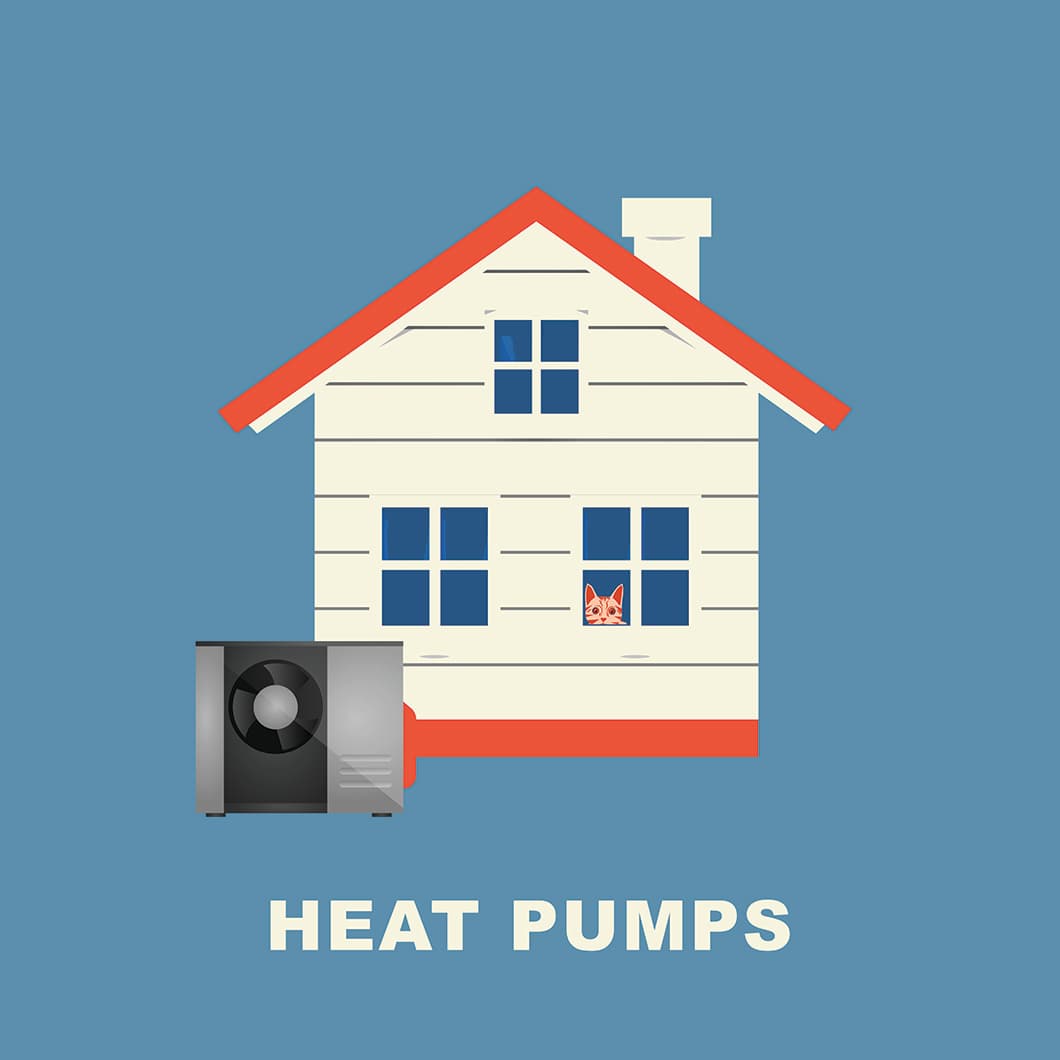The heat pump industry is rapidly growing, how efficient is this renewable source?

How do heat pumps gather heat?
Heat pumps work through a series of futuristic-seeming technology that allows your unit to extract heat from your garden and use this to warm your home. Whilst this might sound too good to be true, it’s worth keeping in mind that your refrigerators have been doing this for years. With the combined benefits of reduced heating costs and reduced carbon emissions, there are more and more reasons to consider air and ground source heat pumps when buying or renovating a home.
Ground source heat pumps warm and cool your home by using a network of pipes about a metre below your garden. The ground temperature at this depth is only mildly affected by the ambient air temperature so it means that your heat pump can be effective through all seasons – during the summer, the earth will be cooler than the air temperature, and vice versa in winter. By pumping a cold fluid through these underground pipes, heat is absorbed from the earth and this can then used to warm your home. This same process works in reverse over summer and allows for heat to be removed from your home when cooling is preferable. Air source heat pumps by comparison are cheaper to install (as they don’t need the subterranean pipe network) but this also means that their efficiency is much more susceptible to seasonal weather changes. Despite this, air source heat pumps are still able to extract ambient heat from the air in temperatures as low as -20, yet this will be much less efficient.
Global uptake of heat pumps
Despite getting a lot less attention than many other forms of renewable energy, heat pumps are becoming more and more common, especially in new build homes. In the US, heat pump installations in newly built residential properties make up 90% of the national market. Currently only making up 5% of the total residential heat demand, the demand is rapidly growing year on year, but conventional heating and fossil fuels are still the most common. Although it’s a smaller market, in the 8 years since 2010, Europe has increased their heat pump sales by 517%. Meanwhile, the US saw an increase from 2.3 million to 3.1 million in the four years up to 2019, a more modest 35% increase.
Of these heat pump installations, the majority are air-to-air heat pumps which it’s worth mentioning are unable to heat up water, only the ambient air temperature. Additionally, in very cold weather, these might struggle to keep your whole house warm – but by getting in touch with heating experts and explaining your property, you’ll get a much more accurate recommendation. By installing the right sized heat pump for your home, it’ll greatly reduce the chance of having heating issues in the future.
Growing demand
This recent uptick in demand for heat pumps can be put down to several growing influences:
- Increased efficiency of heat pump systems which makes them more attractive than in the past
- Growing public awareness of carbon emissions and their global effects
- A global increase in government policies and funding to encourage the uptake of renewables.
In the UK there have been several grants and schemes to support homeowner investment into ground and air source heat pumps. Currently the only active grant is the Domestic Renewable Heat Incentive (RHI) which offers funding for both ground and air source heat pumps – the main requirements for eligibility are a new installation, and a seasonal coefficient of performance of at least 2.5 (which means it provides 2.5x as much energy as it draws from the grid). For more information on funding from the RHI, read our article here.
Seasonal coefficient of performance
Heat pumps are classed as a renewable energy source because they extract heat from the environment, however the heat pump itself still requires an electricity supply and regular maintenance checks. For this reason, a metric called the seasonal coefficient of performance (SCOP) is used to measure the ratio of electricity input to heat output – this makes it easy to work out how much you’ll be saving on your heating bills. Warmaway exclusively uses Nibe products due to their heat pump quality and reliability in both residential and commercial applications. Because we use a single supplier, it gives us a wealth of experience with their heat pumps and helps us fit each customer with the perfect system for their situation.
| Seasonal coefficient of performance at different flow temperatures. | |||
| Ground Source Heat Pump | Air Source Heat Pump | ||
| 35°C | 5 | 35°C | 4.13 |
| 40°C | 4.67 | 40°C | 3.85 |
| 45°C | 4.33 | 45°C | 3.56 |
| 50°C | 4.02 | 50°C | 3.32 |
| 55°C | 3.71 | 55°C | 3.08 |
SCOP figures for GSHP (S1155-25 3×400) and ASHP (F2040-8)
The water temperature you have flowing into your central heating from your heat pump will also play a role in your overall efficiency, as will your heating system e.g. radiators or underfloor heating. If you’re using lower temperatures then your ratio of heat energy : electricity will be much more efficient.
When reading this table, it’s worth keeping in mind that the figure is a ratio of electricity into the heat pumps vs heating out. E.g. at a flow temperature of 45°C the model S1155 ground source heat pump will be producing 4.33 units of heat for every 1 unit of electricity that is being used.
This helps to explain why heat pumps are considered a renewable energy even though they’re still reliant on electricity to function. For the more environmentally conscious, these heating systems can be paired with the use of solar cells to make the heating system completely independent of any fossil fuels. Learn more about solar energy solutions.


